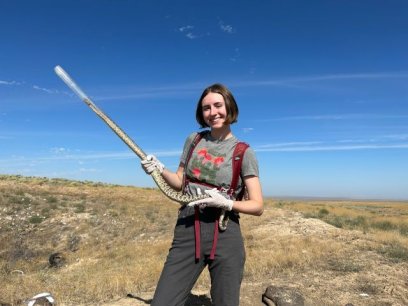
For the fourth year in a row, NEEF and NPS are working together with funding from the US Department of Education to support Greening STEM environmental education projects at national parks. The Greening STEM programs engage youth from under-resourced and/or underrepresented communities in after-school and out-of-school time STEM programming that incorporates citizen science and environmental monitoring.
In addition to the environmental education grants, six of the national parks involved in the project also recruited and hosted an AmeriCorps VISTA member to support their environmental education work. AmeriCorps members in the Volunteers in Service to America (VISTA) program increase the capacity of nonprofit organizations and public agencies by dedicating a year of full-time service in areas that alleviate poverty, such as environmental education.
VISTAs serving on NEEF Greening STEM projects handle many tasks, including managing relationships with afterschool program partners, developing educational components for students, creating outreach and additional fundraising materials, and more. VISTA members receive a housing and living allowance, professional development training, and special hiring status for employment in the federal government should they consider pursuing careers in environmental science or public lands management.
More information about the AmeriCorps VISTA program can be found here.
We asked this year’s VISTA members to tell us a bit about themselves, why they were motivated to work on their projects, and how they are supporting environmental education efforts nationwide. Join us in celebrating their outstanding commitment to environmental education.
Nicole Algarin, Biscayne National Park
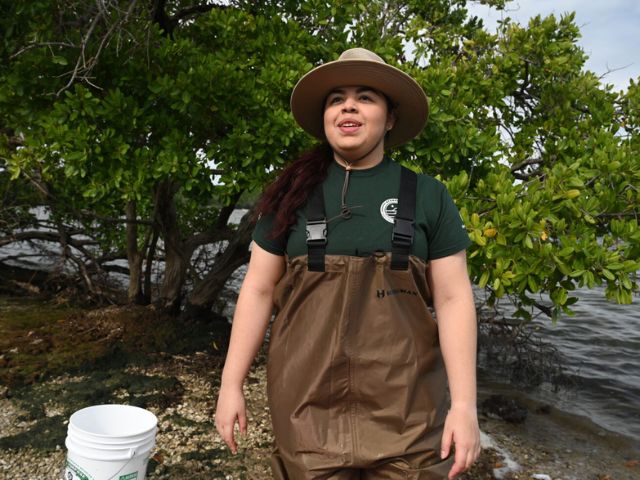
Biscayne National Park has a very active marine debris removal program that focuses on removing potential barriers for loggerhead turtles that nest annually in sites along the Atlantic Coast, including Biscayne National Park. With this project, students from five 21st Century Community Learning Center sites will learn about ocean currents, marine vertebrates and invertebrates, micro debris and micro trash, and apply their understanding of field techniques to conduct small trash transects on Elliott Key. Students will present key findings at a science fair poster display.
“What motivated me to become an AmeriCorps VISTA was the opportunity to engage more with my community by being able to educate the public about our natural resources, beauty, and the rich history South Florida has to offer,” said Algarin. “With my position, I'm able to raise awareness about our ocean's health, teach others on how to become a better environmental steward, and inspire others to love and appreciate the outdoors.”
Algarin says the highlight of being an AmeriCorps VISTA for her is being in a leadership position and engaging with her community and with visitors. She enjoys educating them on important environmental issues the area currently faces, teaching them about marine biology, and learning something new each day.
“Many visitors come from all over the world, and I learn from every person I interact with how their parks are different, how they like to explore nature, and what brought them to visit Biscayne National Park in the first place.”
Jess Borders, Shenandoah National Park
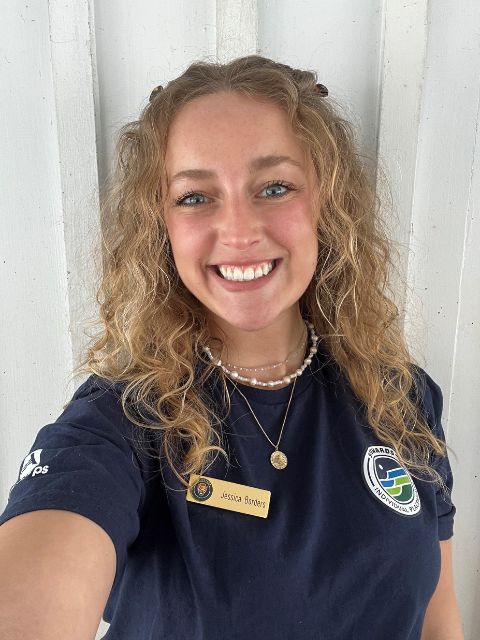
Shenandoah National Park has a well-established education program with more than 30 years of experience providing curriculum-based, STEM-based education programs for area schools that correlate with state and national science standards. The partnering 21st Century Community Learning Centers schools have been longtime participants in the park’s education program and have partnered with Shenandoah National Park for the first year of this grant to build an understanding and appreciation of the NPS, the importance of pollinators, and hands-on creation of gardens.
“I was motivated to be a part of the AmeriCorps VISTA program because of the professional development skills I will learn to help build my career, while completing meaningful work and making a difference in the world,” said Borders. She always looks forward to working with students, “the future stewards of our planet,” and finding creative ways to teach them.
Chelsea Gouine, Great Smoky Mountains National Park

For this project, Great Smoky Mountains National Park has partnered with the Boys & Girls Clubs of Tennessee Valley and Graham County Schools to bring students into the park to experience STEM programs. The goal of this project is to increase STEM literacy and connection to public lands for students with limited access to these spaces. NPS educators work with students during day camp-style programming that includes environmental stream and soil inventory and monitoring, as well as incorporating traditional Cherokee crafts and technology into STEM activities.
“My motivation to become involved in the AmeriCorps VISTA program was the desire to get youth involved in outdoor education and moving in nature,” said Gouine. “One highlight is when students say they want to become a park ranger when they grow up!”
David Hamilton, Rocky Mountain National Park
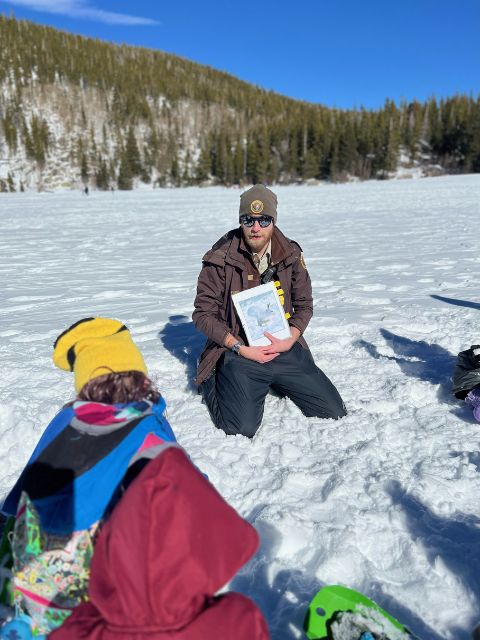
This Greening STEM project at Rocky Mountain National Park aims to enhance the environmental education programing at the Academy of Arts & Knowledge, a Pre-K to 5th Grade arts-integrated charter school in Fort Collins, Colorado. The goal is to expand the school’s capacity to offer high-quality environmental education opportunities that foster creativity, problem-solving, and hands-on learning experiences for all students, particularly those from underrepresented and marginalized backgrounds.
Through this partnership, students attended onsite field trips to Rocky Mountain National Park to participate in ranger-led programming, and received bi-monthly visits from Hamilton and other AmeriCorps VISTA members to tie the STEM programs experienced within the park to school programming. Participating students will host a table presenting what they’ve learned at Rocky Mountain National Park’s annual Earth Day Celebration on April 22.
“I joined the AmeriCorps VISTA program to work with students who would normally not be able to visit our national parks and give them the opportunity to learn and play in the mountains,” said Hamilton. “I am so excited to be at Rocky Mountain National Park for a full year and provide hundreds of students with positive outdoor experiences.”
Connor McCarthy, Gateway National Recreation Area
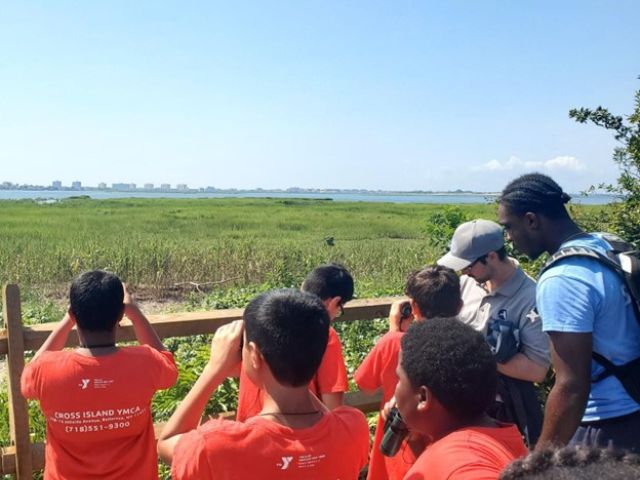
The Seasonal Change: Monitoring the NYC Environment for Climate Change project engages students in citizen science through collecting, analyzing, and visualizing phenology data of key plant species in the Jamaica Bay Wildlife Refuge within Gateway National Recreation Area. Located in Brooklyn and Queens in New York City, the area contains ecological, cultural, and historical sites as diverse as the city that surrounds it. The Jamaica Bay Wildlife Refuge itself has over 12,000 acres of open bay, wetland, pond, and woodland habitat, a visitor’s center and classroom, and miles of hiking trails.
“Just past the midpoint in my time as an AmeriCorps VISTA, we have welcomed over one thousand students to the Jamaica Bay Wildlife Refuge,” said McCarthy. “Many of these kids have not been to a national park before and do not frequent natural areas. Because of this, it has been an amazing detail during our programs to see students overcome fears, lean into new experiences, encounter unique wildlife, and become more comfortable in the outdoors.”
Alexandra Sines, Cuyahoga Valley National Park
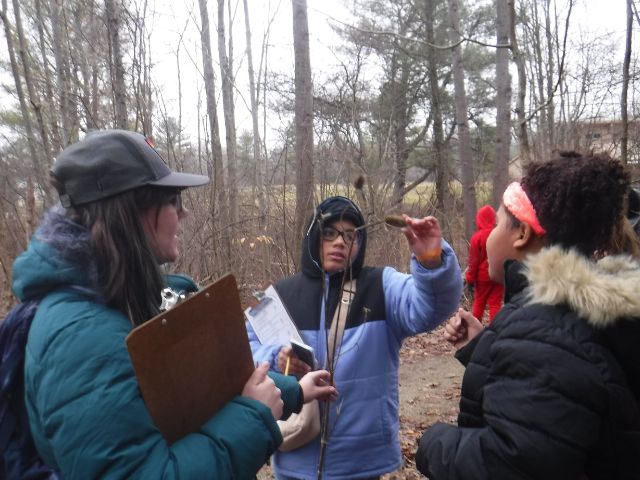
This project at Cuyahoga Valley National Park is providing meaningful STEM education related to the upcoming total solar eclipse for underserved students in the Cleveland metropolitan area, which is one of many areas within the eclipse’s path of totality. Alex Sines, AmeriCorps VISTA, worked with educators at the Conservancy for Cuyahoga Valley National Park and park rangers to provide students with scientific programming and activities focused on the eclipse, empowering them to enjoy this extraordinary celestial event in a safe and informed manner.
“What motivated me to become an AmeriCorps VISTA was the chance to help others gain valuable knowledge and experience they might otherwise miss out on and help provide them resources they can use to improve their lives and their communities,” said Sines.
She said a highlight of her current role has been seeing how big of an impact these programs can have on the students, and how excited they are to learn and participate in something they may never have given a second thought to otherwise.
“I am also so moved by the affection and respect the students have shown me, and I work hard to make sure I earn and honor that response."
Interested in learning more about NEEF’s Greening STEM program? Check out our Greening STEM Hub page. For more information about NEEF’s grant process, including a list of open grants, visit our Grants page.

